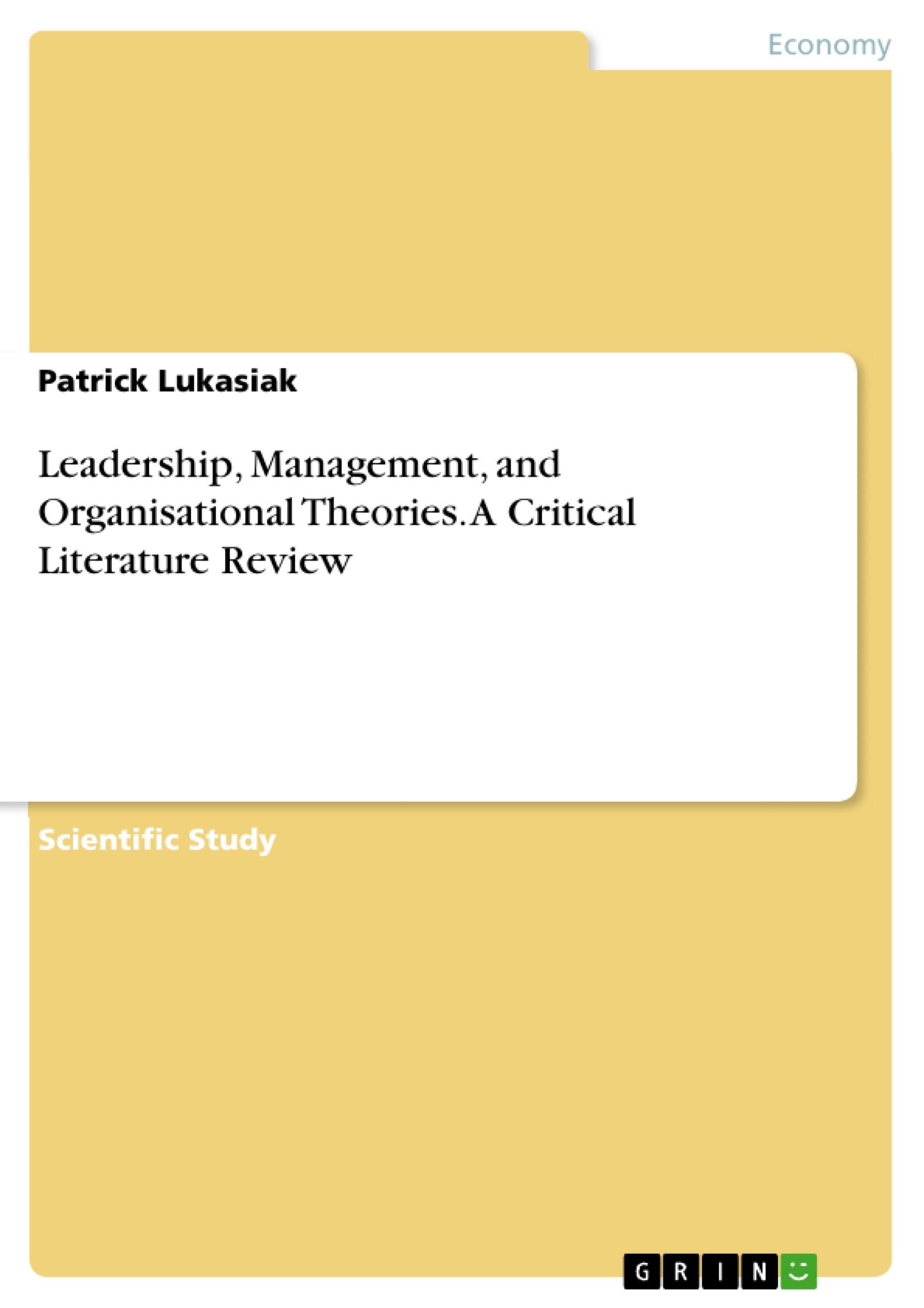In the context of the Leadership Management and Organisation Theory (LMOT), the present paper is a critical literature review of organisation, leadership and management literature. The evaluation requires to identify, explore and interpret those aspects of organisation, leadership and management theory that cast light on organisational dilemmas, complexities and nuances which are appropriate to my research objectives and identify gaps in the literature to which my research programme will contribute. It is necessary to make informed judgements that involve a synthesis of relevant fields of leadership, management and organisation theory that are relevant to my proposed area of research.
Furthermore, it is required to demonstrate ongoing development of the appropriate standard of written presentation necessary to be able to demonstrate original thought and to present critical and sustainable arguments to peers in professional and academic domains. Since the topic has a strong relationship to my research topic it was for logical reason obvious to include also literature review on organizational success factors which relates strongly to start-ups and agile management since the founder has a central role to conduct and implement agile management into the organization.
Inhaltsverzeichnis (Table of Contents)
- INTRODUCTION
- LEADERSHIP AND MANAGEMENT THEORY
- ORGANIZATIONAL THEORY
- ORGANIZATIONAL CULTURE
- ORGANIZATIONAL SUCCESS FACTORS
- REFLECTIONS
Zielsetzung und Themenschwerpunkte (Objectives and Key Themes)
This paper is a critical literature review of organization, leadership, and management literature. The evaluation aims to identify, explore, and interpret aspects of organizational theory relevant to the research objectives. It seeks to identify gaps in the literature to which the research program will contribute. The paper also seeks to demonstrate the development of written presentation skills necessary to present critical and sustainable arguments to peers in professional and academic domains.
- Organizational Dilemmas and Complexities
- Leadership and Management Theory
- Organizational Culture
- Organizational Success Factors
- Agile Management and Start-Ups
Zusammenfassung der Kapitel (Chapter Summaries)
The introduction chapter establishes the purpose and scope of the literature review. The second chapter delves into leadership and management theory, exploring various frameworks and models that illuminate organizational dynamics. The third chapter focuses on organizational theory, examining concepts and principles that govern the structure and function of organizations. The fourth chapter explores organizational culture, emphasizing its impact on organizational effectiveness. The fifth chapter investigates organizational success factors, particularly as they relate to start-ups and agile management.
Schlüsselwörter (Keywords)
The primary keywords and focus topics of this paper include organizational theory, leadership and management, organizational culture, organizational success factors, agile management, start-ups, and critical literature review.
- Quote paper
- Patrick Lukasiak (Author), 2020, Leadership, Management, and Organisational Theories. A Critical Literature Review, Munich, GRIN Verlag, https://www.grin.com/document/933684



